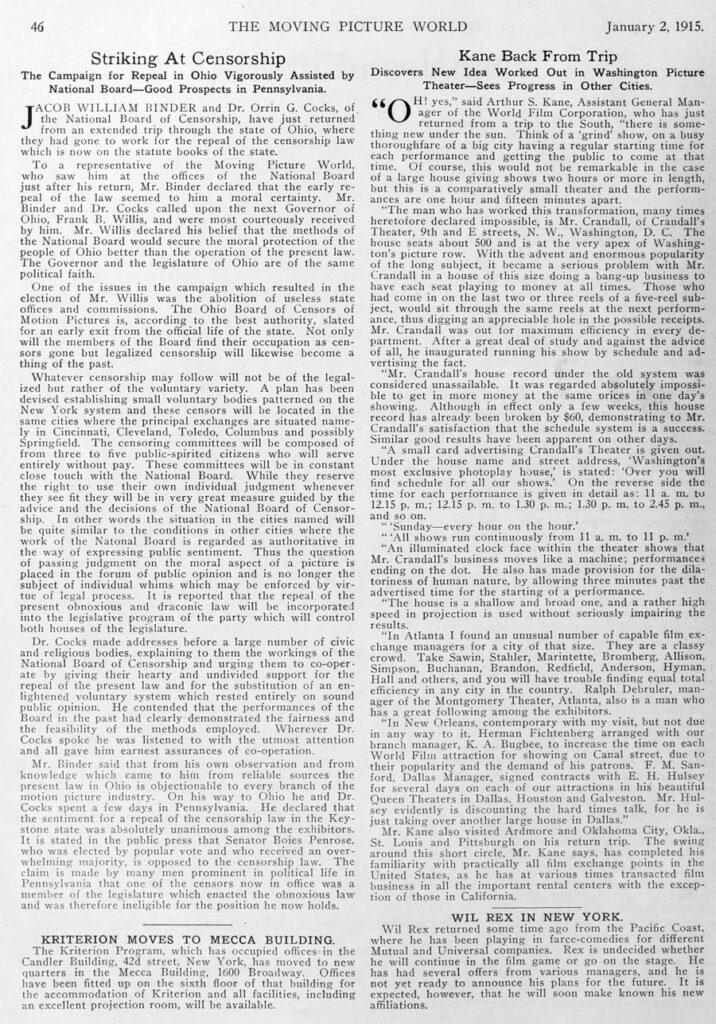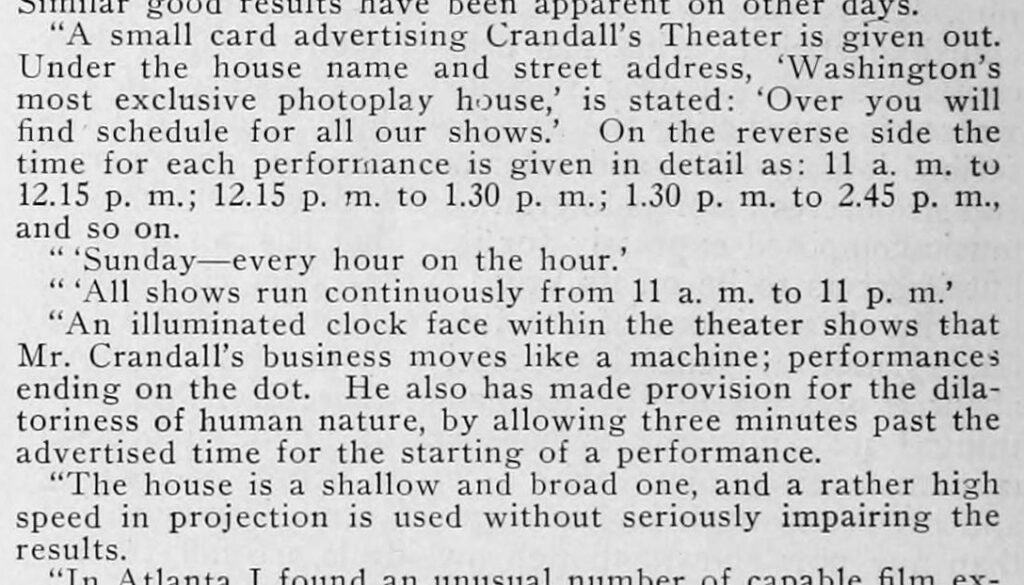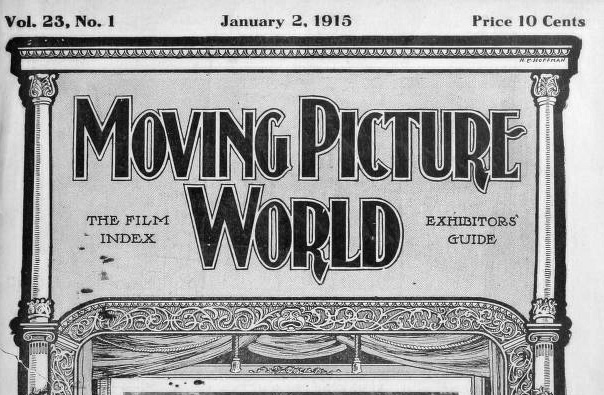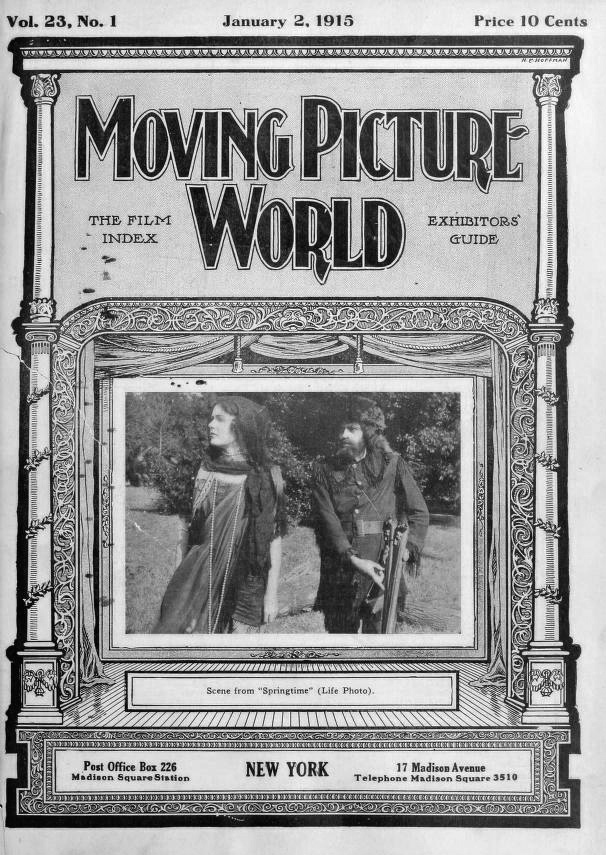It’s always fun finding another nugget of evidence as to how far back the practice of silent era sped-up film projection went. During the pandemic, I made a reading project of going through issues of the Moving Picture World from 1916, and then on to 1917. I’d stopped this a couple of years ago, but have recently picked it up again. This time, however, I decided to read issues from 1915.
I didn’t get very far into January 1915 before hitting something that gave evidence of an increased projection speed as a general practice. Not far at all…only about a quarter of the way in to the January 2, 1915 edition.
The right-hand column of the page is a report from World Film Corporation’s Ass’t General Mgr Arthur S. Kane. He reports on a movie theater in Washington DC that has found a programming and scheduling formula that has helped standardize show times.
This is something I read about in issues of the MPW in 1916 as well, and the importance of the movie-going public being able to easily know and rely on when a program would begin.
The owner of the Crandall’s Theater at 9th and E Streets NW, a 500-seat house, had decided to standardize show times not only as an incentive to prospective patrons but as a way of generating more ticket sales. With the advent of the 5-reel “long subject” Crandall found that there were ticket-buyers who would enter in the middle of the 5-reeler, and stay for the next show to see the film’s first couple of reels. This was cutting into ticket sales.

Crandall decided to make all of his shows begin at 1 hour and 15 minute intervals, and advertise to the public that all his shows would have the same schedule every day. A single reel of film being shown at 18 frames per second runs 15 minutes long; a 5-reel picture lasts 75 minutes. Kane notes that Crandall typically starts the film three minutes past the appointed start time. Factoring in this and time has to be allowed for the audience to exit and enter between showings, you have more than 75 minutes total time.
Kane explains how Crandall and his projectionists were able to keep all shows to 75 mins: “…a rather high speed in projection is used without seriously impairing the results.”

You can find the January-March 1915 issues of the Moving Picture World on the site of the Media History Digital Library

